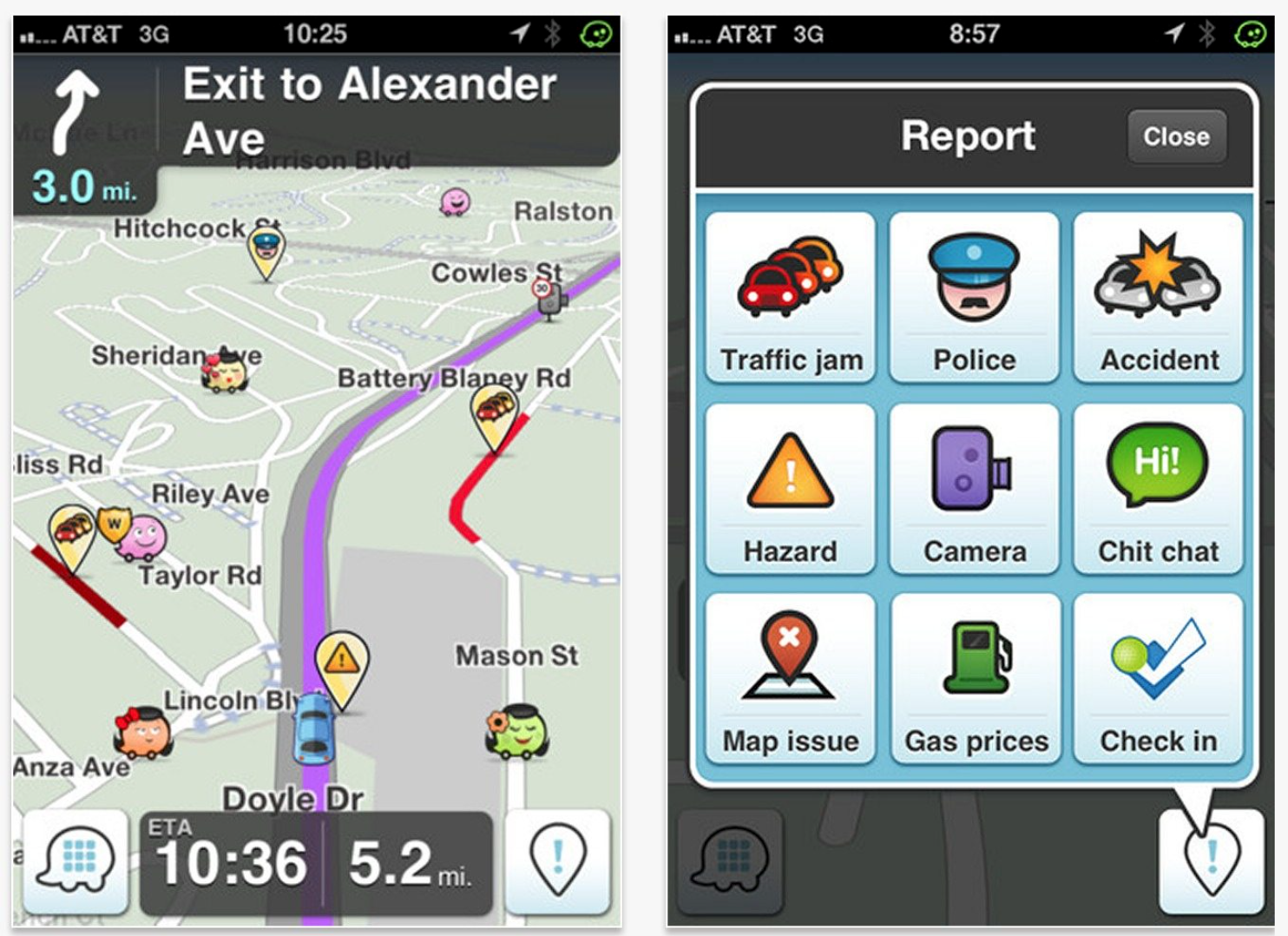I have used Google Maps forever (at least since interactive maps with directions became available). My car navigation system mostly works, but it cannot be updated and it does get lost at times in San Francisco and the suburbs.
Whenever I take Uber or Lyft, I ask the drivers what they use to navigate. All of them use Google Maps and Waze at a minimum. Even though I’ve heard from friends and others that they use Waze because it  provides traffic information, Google does as well. So there wasn’t anything that sounded significantly better or different enough to compel me to try Waze.
provides traffic information, Google does as well. So there wasn’t anything that sounded significantly better or different enough to compel me to try Waze.
Last month, colleagues from Mexico came to San Francisco and we were meeting at a restaurant that is in an alley at Fisherman’s Wharf, a crowded and congested area. They were driving and had not been to the city before. I was concerned that they would not be able to find the restaurant and suggested that we tell them to look for easy-to-see stores and restaurants near the alley. Just as we were texting more details, they arrived. They said they had no trouble finding the place using Waze; it was easy!
Foreigners, who had never been in the area before and yet found a somewhat hidden restaurant, convinced me to try Waze. I decided to use it on a couple of 1.5 to 2 hour driving trips, each about 80-90 miles one way. And there is a big difference. Waze provides much more information about traffic and road conditions during the trip. It is partly a crowdsourcing app; meaning that other drivers can input information about the route you are on. Because of that feature, I received information about cars on the shoulder, potholes, police, hazards, and accidents as I approached them. Waze announces in advance what is coming up, displays it on the map with an icon and says, “Watch out there is a (specific warning) ahead.” When you have driven past the problem area, the icon goes away. It also displays your speed and the speed limit for the section of the roadway if you’re exceeding the limit.
I am a convert now. While I expected Waze to be better, I certainly didn’t expect it to be leaps ahead. The navigation is the same, but what makes it distinctive is the supplemental information provided by the driver community.
Many healthcare organizations continue to do the same things they have been doing for years with only minor improvements when needed. They assume their customers won’t go to a different place for care. That may be true unless there is a problem that forces them to look elsewhere. But as soon as the customer hears of another clinic or hospital or doctor who does the same thing in ways that better suits the customer, that healthcare organization will see their patients walking to the competition and not coming back. They will also not be able to attract new patients.
TAABB (There’s always a better boat.) Are you looking at your organization and assessing what is needed to better serve your customers for the future? Are you attracting new customers? Keeping up is not good enough to guarantee future business. You need to stand out from the crowd with at least two features that are above and beyond your peers. Transparency and consumer information is high value in today’s market and unfortunately, not offered as standard practice.
Today, the healthcare customer has choices. What are you doing to make sure you’re their first choice for care?


Leave A Comment
You must be logged in to post a comment.